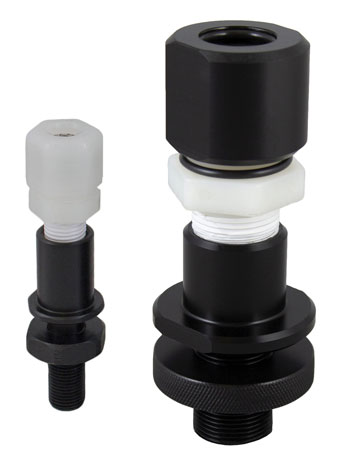
Figure 10-17
Artesian Well Fitting Assembly
Monitoring of flowing artesian conditions using Leveloggers can be quite straight forward. Continuous artesian conditions infer that the piezometric surface never drops below the level of the ground surface, or particularly the top of casing elevation, and the casing is sealed with a wellhead. In this case, where freezing is not a concern, the Levelogger need only be installed on the wellhead itself by means of an Artesian Well Fitting Assembly, as illustrated in Figure 10-17. This same fitting allows the use of a Direct Read Cable to install the Levelogger at depth in a well, for cases when the piezometric surface falls below top of casing. See separate installation instructions.
When conducting artesian monitoring with Leveloggers, a number of issues should be considered. First, ensure that the maximum hydraulic pressure the datalogger will encounter at its installation point, will not exceed the specified range of the datalogger. Second, artesian conditions do not preclude the necessity for barometric compensation of Levelogger data. Artesian conditions are caused by aquacludes forming confined aquifers. Confined aquifers, while not acted on by barometric pressure to the same extent as unconfined aquifers, are typically subject to barometric pressure at some barometric efficiency (See Section 10.1.3.1). Finally, bear in mind that the total pressure and subsequent water column equivalent depth measured by the Levelogger after barometric compensation may not represent the actual water level within the artesian well. Sealed intermittent artesian wells can be pressurized when artesian, but can also be de-pressurized when non artesian. The Levelogger's reading after barometric compensation represent the height of the piezometric surface.
Note:
The Artesian Well Fitting Assembly is not recommended for pressures in excess of 30 psi (66 ft (20 m) of water column).




